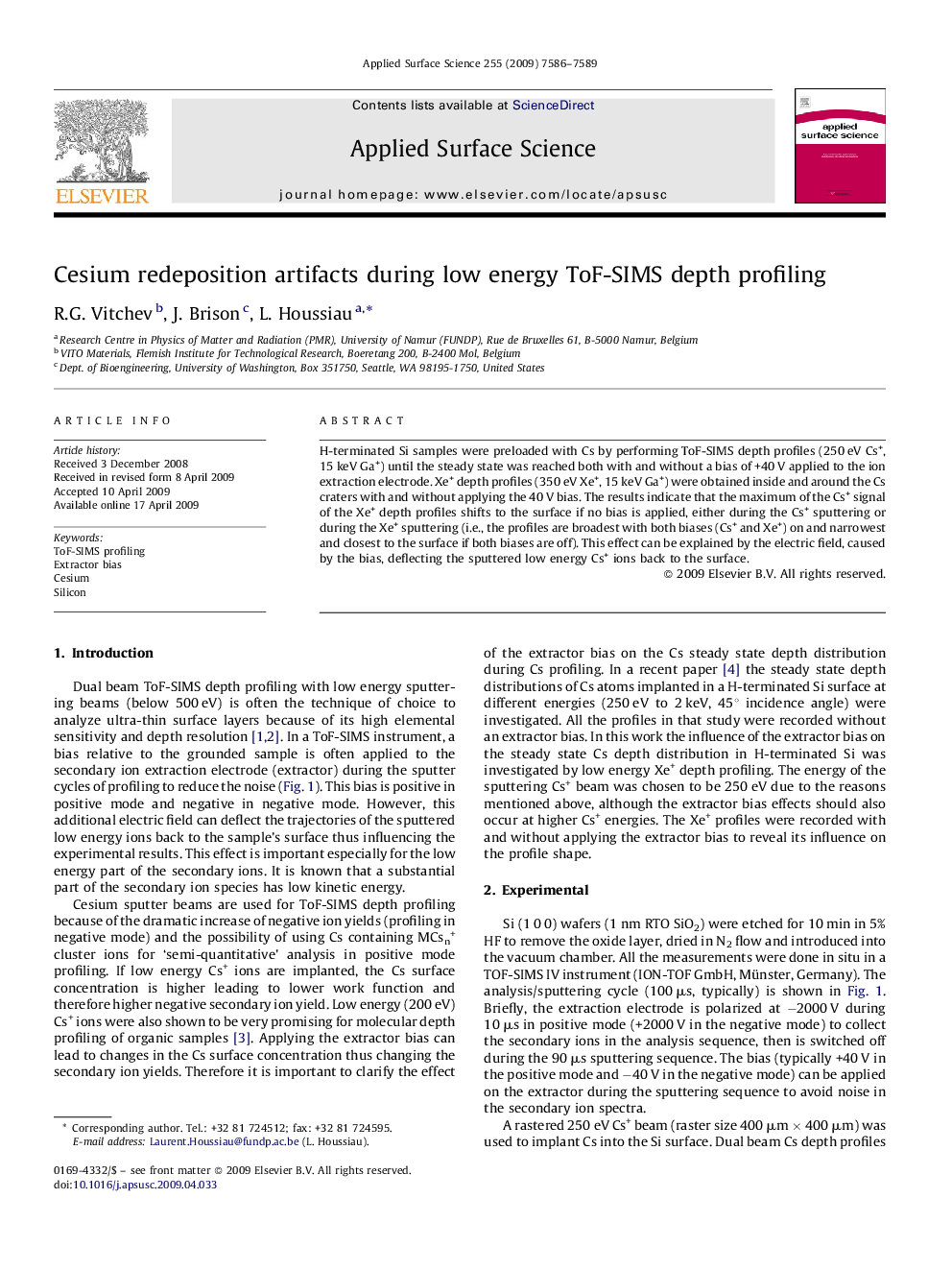| Article ID | Journal | Published Year | Pages | File Type |
|---|---|---|---|---|
| 5366839 | Applied Surface Science | 2009 | 4 Pages |
H-terminated Si samples were preloaded with Cs by performing ToF-SIMS depth profiles (250Â eV Cs+, 15Â keV Ga+) until the steady state was reached both with and without a bias of +40Â V applied to the ion extraction electrode. Xe+ depth profiles (350Â eV Xe+, 15Â keV Ga+) were obtained inside and around the Cs craters with and without applying the 40Â V bias. The results indicate that the maximum of the Cs+ signal of the Xe+ depth profiles shifts to the surface if no bias is applied, either during the Cs+ sputtering or during the Xe+ sputtering (i.e., the profiles are broadest with both biases (Cs+ and Xe+) on and narrowest and closest to the surface if both biases are off). This effect can be explained by the electric field, caused by the bias, deflecting the sputtered low energy Cs+ ions back to the surface.
